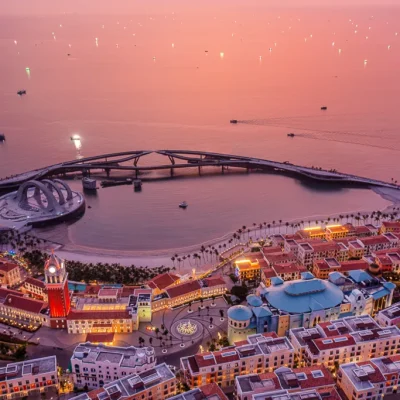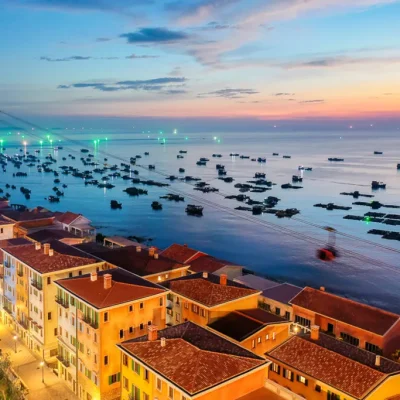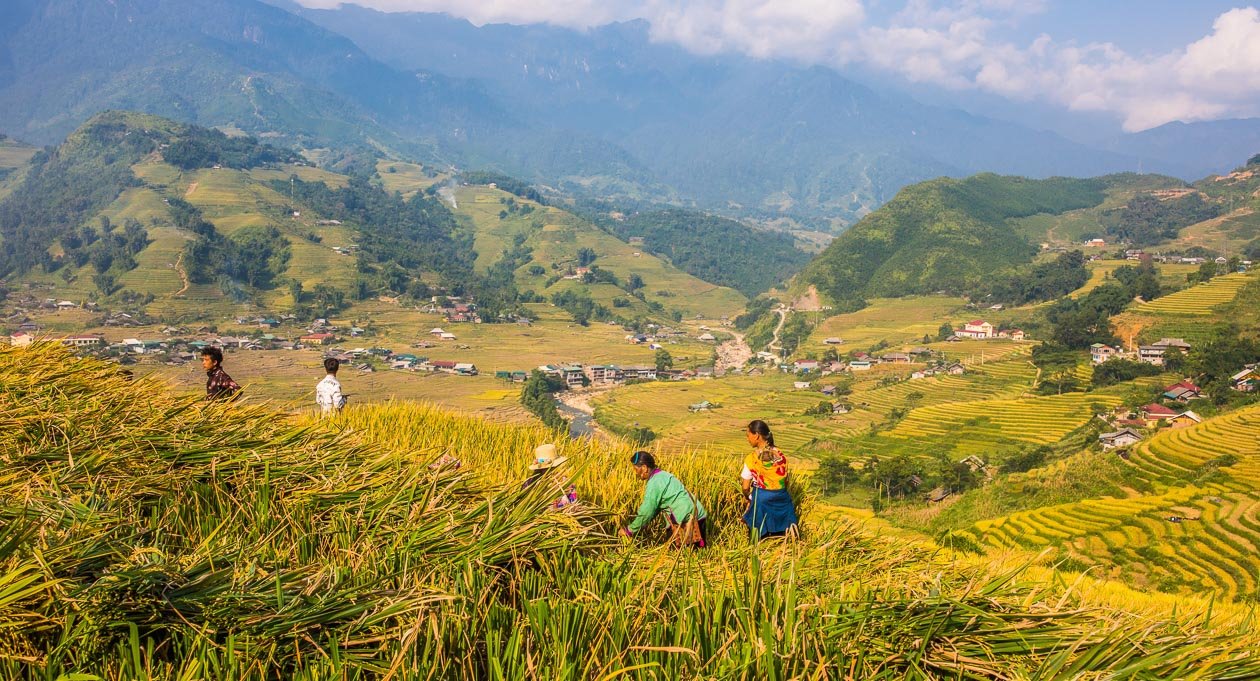Exploring the Majestic Beauty of Northern Vietnam
Sapa, nestled in the mountains of northern Vietnam, is a captivating town known for its breathtaking landscapes, ethnic diversity, and rich cultural heritage. Situated at an elevation of around 1,500 meters (4,900 feet), Sapa offers stunning views of terraced rice fields, lush valleys, and towering mountains, including the iconic Fansipan, the highest peak in Indochina.The town is home to several ethnic minority groups, including the Hmong, Dao, Tay, and Giay, each with their own distinct traditions, languages, and vibrant traditional attire. Visitors to Sapa have the opportunity to immerse themselves in the local culture, interact with the friendly locals, and learn about their traditional way of life.Trekking is a popular activity in Sapa, with numerous trails leading through picturesque landscapes and remote villages. Guided hikes take visitors to cascading waterfalls, scenic viewpoints, and authentic hill tribe communities, providing a unique and immersive experience.Sapa also boasts a bustling market where visitors can browse and purchase local handicrafts, textiles, and traditional products made by ethnic minority groups.With its awe-inspiring natural beauty, cultural diversity, and outdoor adventures, Sapa is a remarkable destination that offers a glimpse into the rich traditions and stunning landscapes of northern Vietnam.
Majestic Mountain Landscapes:
Prepare to be mesmerized by the awe-inspiring mountain landscapes of Sapa. Surrounded by the Hoang Lien Son Mountain range, including the iconic Fansipan, the highest peak in Indochina, Sapa boasts dramatic valleys, terraced rice fields, and cascading waterfalls. Immerse yourself in the tranquility of nature as you breathe in the fresh mountain air and witness the ever-changing beauty of the mist-covered peaks.
Trekking Adventures:
Sapa is a paradise for trekking enthusiasts, offering a multitude of trails that lead to remote villages and scenic viewpoints. Lace up your hiking boots and embark on an unforgettable trek through the terraced rice fields, traversing ethnic minority villages along the way. Encounter the friendly locals from ethnic groups such as the Hmong, Dzao, and Tay, and gain insights into their traditional way of life. Marvel at the vibrant traditional clothing, intricate handicrafts, and unique cultural practices that define these communities.
Ethnic Markets and Traditions:
Experience the vibrant cultural tapestry of Sapa by visiting the bustling
ethnic markets that occur on specific days of the week. Bac Ha Market, held on Sundays, and Can Cau Market, on Saturdays, are among the most renowned. Engage with local traders adorned in colorful traditional attire, and browse an array of goods, including handicrafts, textiles, fresh produce, and livestock. Immerse yourself in the lively atmosphere and witness the fascinating exchange of goods and cultural traditions.
Homestays and Community Tourism:
For a truly immersive cultural experience, consider staying in a homestay within an ethnic minority village. Embrace the warm hospitality of the locals as you share meals, participate in traditional activities, and gain a deeper understanding of their daily lives. Engage in farming activities, learn to cook local dishes, or join in traditional music and dance performances. Community-based tourism initiatives in Sapa provide an opportunity to support local communities while experiencing their rich cultural heritage.
Silver Waterfall and Love Waterfall:
Sapa is blessed with numerous breathtaking waterfalls, offering a refreshing respite from trekking adventures. The Silver Waterfall located just a short drive from Sapa town, cascades down the mountainside, creating a stunning display of natural beauty. The Love Waterfall, situated deeper into the valley, captivates with its multi-tiered cascade and tranquil surroundings. Capture the beauty with your camera, or simply immerse yourself in the serenity of these natural wonders.
Local Cuisine:
Indulge in the flavors of Sapa by sampling its unique local cuisine. Savor hearty dishes such as thang co (a traditional stew made from horse meat) or the popular grilled dishes featuring fresh mountain ingredients. Don’t miss the opportunity to try the renowned Sapa mushrooms, known for their distinct flavor. Engage in a cooking class and learn to prepare traditional dishes using local ingredients, bringing the flavors of Sapa back home with you.
Practical Tips:
- Best Time to Visit: The best time to visit Sapa is from March to May or September to November when the weather is mild and the rice terraces are at their most vibrant. Avoid the rainy season (June to August) if you prefer clearer skies and better trekking conditions.
- Packing Essentials: Bring comfortable hiking shoes, lightweight and moisture-wicking clothing, a rain jacket, and insect repellent for trekking adventures. Don’t forget to pack a hat, sunscreen, and a reusable water bottle.
- Trekking Preparations: Engage a local guide to ensure a safe and enjoyable trekking experience. Inform yourself about the difficulty level of the trails and choose routes that suit your fitness level. Carry essentials such as water, snacks, and a first aid kit.
- Cultural Sensitivity: Respect local customs and traditions by dressing modestly, especially when visiting ethnic minority villages or sacred sites. Seek permission before taking photographs of individuals and be mindful of cultural practices and beliefs.
- Altitude Considerations: Sapa is situated at a higher altitude, and some visitors may experience altitude sickness. Take it easy upon arrival, stay hydrated, and acclimatize gradually to the altitude.
Conclusion:
Sapa beckons with its majestic mountain landscapes, vibrant ethnic cultures, and unparalleled trekking adventures. Immerse yourself in the natural beauty of terraced rice fields, encounter the warm hospitality of ethnic minority communities, and embrace the serenity of this captivating destination. From trekking through remote villages to indulging in local cuisine and exploring breathtaking waterfalls, Sapa offers a wealth of experiences that will leave you with lasting memories. Whether if you’re captivated by the stunning landscapes, fascinated by the rich cultural diversity, or seeking an immersive adventure, Sapa promises to be an unforgettable destination. Embrace the beauty of the mountains, connect with the local communities, and let the magic of Sapa unfold before your eyes.






